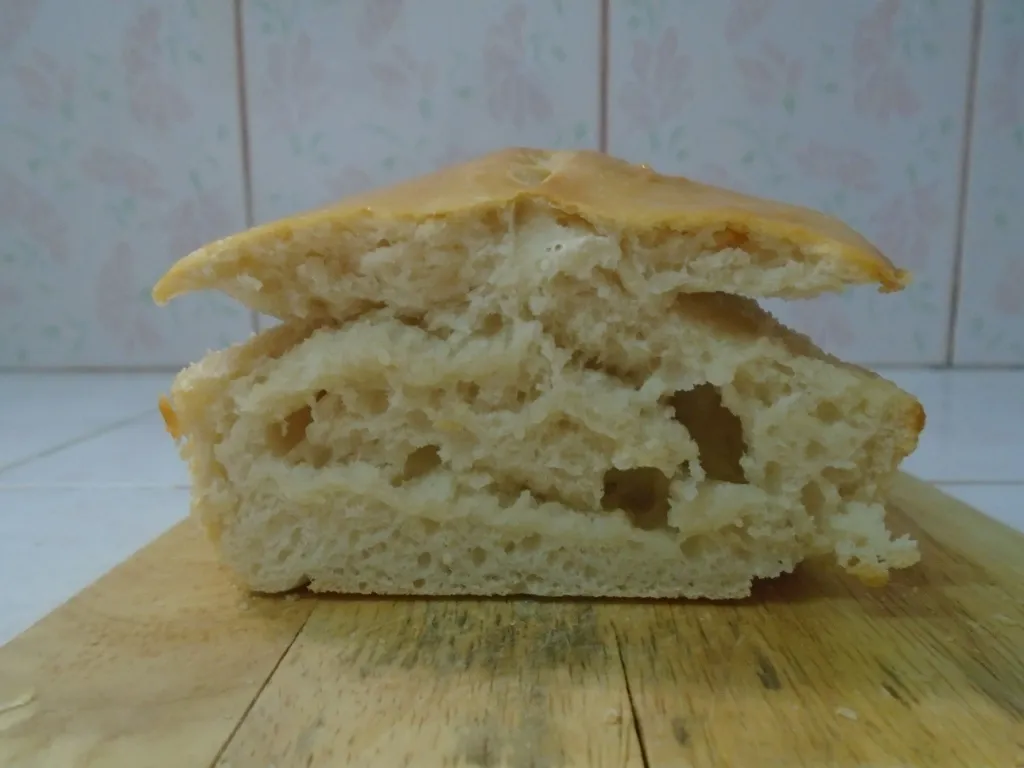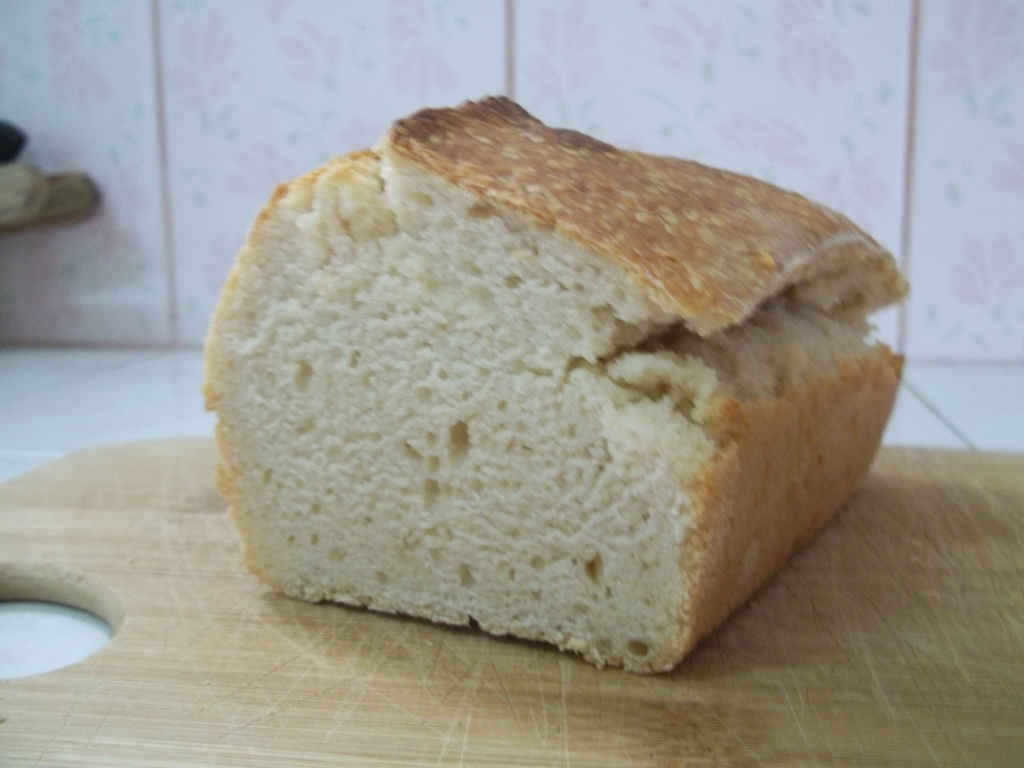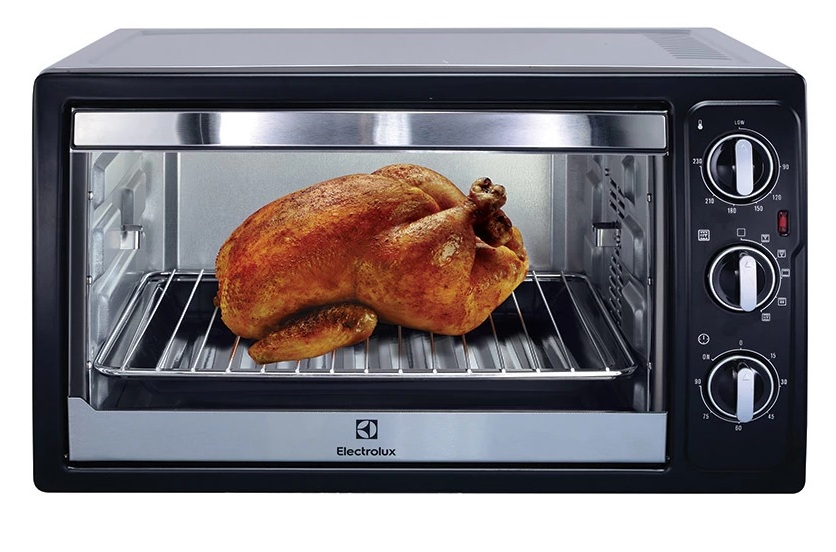
Hello, fellow bakers!
I'm new here. I have been doing trial and error of sourdough, trying to get a few favorite recipes, and improve my techniques. I have basically been trying to achieve 2 different recipes: an artisan loaf, and a fluffy sandwich loaf (kind of like a Hardy's/Carl's Jr Frisco bread, but obviously better).
After several bad attempts, I found a recipe at Genius Kitchen that looked exactly like the sandwich loaf I've been looking for, and it was too highly rated for me to ignore. (Recipe here: https://www.geniuskitchen.com/recipe/basic-sourdough-bread-34753) I hate to post a question on a recipe I've only made once, but I have seen this same thing happen with all loaf bread recipes...
I call it a "flying saucer crust", because to me, that's what it looks like. The sides crack under the crust, and then it's like a flying saucer (the top crust) bakes on top of the rest of the bread. Every loaf pan recipe I have tried has created this on me at some point, but not every single time.
I have 2 theories. 1) Not enough bread dough for the pan. I only made a half recipe, since I didn't want a lot of waste if my family didn't like the bread. I should have looked closer at the recipe, since it only makes 1 loaf. So I ended up with about half a loaf, which never rose over the top of the loaf pan. Maybe that really messed with the baking. 2) Cheap loaf pans. I got mine at Dollar Tree in the U.S. I live in Laos, and loaf pans are outrageously expensive here, when you can find them. So I bought some cheapo pans and brought them over. Their purpose was for banana bread (which never gives me flying saucers, no matter how much batter is in the pan), but I figured they could work for bread, too.
Does anybody else have any other thoughts? FTR, I am also baking in an extra large Electrolux toaster oven. I am confounded, since the bread is wonderful and exactly what I am looking for otherwise. I will try it again, but with a full recipe this time, to see if that makes a difference.
How is your Salt ratio? Not enough salt will do goofy things sometimes because it grows too fast.
Interesting thought. The recipe called for a little butter, and I used salted. So I only added a little more salt (didn't measure, just sprinkled it in). Never thought of the salt before. I will monitor this in the future. I didn't realize that salt could affect it like that - I knew it would kill the yeast if there is too much, and I thought that most of the time, salt was only there for flavor. But this makes sense.
Salted butter is the expected type anyway, unless "unsalted" is clearly specified. So use salted butter plus the full amount of salt. After you try it as printed, if it tastes too salty, then change something. If you have to reduce salt for medical reasons, there has to be a way to do it successfully - but if there are no medical reasons, then it's not right to blindly avoid salt.
Actually, the recipe just says "butter." And in my non-bread-baking experience, UNsalted is almost always the norm. Please excuse me, as I am fairly new to bread making, especially sourdough. I have only made a few sourdough recipes, and I live in Southeast Asia, where my results will most likely be different from others' anyway. I do understand that too much salt can kill yeast, and make for bread that is like a salt-lick (especially when slathered with salted butter). I just didn't want to overdo it, and I suppose I was a little too safe with my salt amount.
I only ever use unsalted butter for cooking/baking. I don't even keep salted butter in the house.
You may have a dough handling issue. I see a very uneven crumb in that pic. You may be getting some big gas bubbles up near the top and they are pushing the crust up and breaking a very thin lawyer of dough near the wall of the pan.
Okay, this also makes sense. How do I fix that? More/less kneading or shaping?
More kneading, or if you have the time, mix everything up, then just let it sit for 4 or 5 hrs. It will "knead" itself. I would also give it a punchdown before shaping. So, mix it up, let it sit, punch it down, shape, put in pan, let rise till almost doubled, bake. I would also wet the top of the dough in the pan with water before baking. If you could must it well with water I think it would help.
I suspect a shiny bottom oven and shiny pans with the top crust setting up before the loaf is fully oven sprung. Could that be? A photo of the oven might help with tweaking the set up. And yes, pan size and dough amount play a big role.
I'm pretty sure this is the one I have: https://www.google.com/search?q=electrolux+rotisserie+oven&source=lnms&tbm=isch&sa=X&ved=0ahUKEwi-tuThgqfiAhXGUN4KHWaLB3UQ_AUIDigB&biw=1366&bih…; Mine needs cleaned, so I didn't want to snap of pic of it! :(
It was the biggest one I could find in Vientiane, without going for a commercial restaurant type oven. I baked the bread in a loaf pan (yes, shiny and cheapo). I always bake on just the "bake" feature and not the convection. (Messed that up before, though! I once had only the top element on convection. Burnt top and doughy bottom! Yuck!)
the link was a whole page of different ovens. I think you might do better with some free form shapes. Keep the dough around 1000g total dough weight and you should be fine. Flip the solid baking tray upside down to use as a baking shelf to trap more heat under the loaf.
Shiny pans are limited but if you can bake to the point that the loaf will release from the tin, the loaf can be flipped out to finish baking straight onto a rack to brown it up. I liked lining cheap foil tins with baking parchment, even a paper box will work to only support the rise, and let the loaf rise. Remove from the tin or box when risen enough and bake more free style.
Transfer the loaf: pick up the parchment with loaf stuck to the sides onto something thin and supportive (like a narrow sheet of heavy cardboard) score and slide onto the hot oven tray. The paper releases while the crust bakes and Remove the paper when rotating the loaf halfway thru the bake. Save paper for another loaf. Make sure the oven is shaded or the thermostat tends to reduce the oven heat.
with all the suggestions given. I have attempted to bake an artisan loaf on the black grill pan directly, but I forgot to grease it, and my bread stuck horribly. Which is sad, since that was the prettiest loaf I have ever baked! :( Not certain if it would work with the Genius Kitchen recipe. And for that I'm really wanting a nice loaf pan bread, something soft and fluffy for sandwiches, etc. I do have a better loaf pan I'll try using as well.
I have started taking notes as I bake. I feel like I can't do anything more until I follow the recipe as written. If the flying saucer appears again when following the recipe to the T, then I'll troubleshoot some more.
Had that happen enough times. Sometimes it releases by itself when the loaf has completely cooled down. A hard thing to wait for. Can also dust the loaf with flour or seeds where it has contact to the pan. Getting ahold of baking parchment or a baking mat would be helpful. (Anyone heading for a boarder run?) Sifting flour onto the sheet should do it without grease. Then any toasted flour left on the sheet can be saved and used to thicken and flavour sauces and soups or even thrown into the next dough.
Another thing you can try is letting the oven preheat for ten minutes before shoving in the upside down empty pan to preheat it. Dust the hot pan with flour (or the cardboard) and place risen dough onto it. Brush off extra flour after cooling. Set the baking timer higher than you need so the oven stays hot during the entire bake. The last ten minutes of some ovens only "coast" and tend to cool down.
Sounds like each bake is improving so hang in there. When you figure it out, make a little reminder card for the steps when things get hectic in the kitchen. :)
Looks under cooked to me. The linked recipe calls for 375 then lowering to 350. To me that is 100-150 degrees F too cold.
The recipe labels itself as basic sourdough. I'm not aware that San Francisco-type sourdough has dairy in it. As a general statement, sourdough does not have dairy. It is flour, water, salt and yeast. Yeast in the case of sourdough is naturally occurring and is generated through a starter.
The linked recipe seems to be a type of hybrid biscuit dough and white sandwich bread.
The recipe link I posted (and attempted to bake, but flubbed, as seen in the picture) calls for sourdough starter. No baking powder/soda, no added commercial yeast, no other leavening. It doesn't call itself San Fransisco style. Yes, it does call for a measly tbsp of butter and milk (instead of water) for some softness. I'd say it is closer to a "farmhouse" style sourdough. White sandwich bread, sure, but biscuit dough? Sorry, not so much. (Also, American biscuits or British biscuits?)
No, it is not the traditional flour-water-salt super-crusty boule or batard. I already have a recipe/formula/technique I like for that. I didn't ask this question to discuss that kind of loaf. I came here to discuss a fluffly sourdough white sandwich bread, like the recipe from Genius Kitchen that I posted.
Seems to me there's an issue with the loaf pan (and it's a common problem, as far as I can judge, by the posts on forums). I had the same issue last year (I had a restaurant then). We bought several loaf pans (quite cheap, as we had practical no money), and we had to throw out almost all of them later.
Choosing the right bread pan: size affects rise in a major way: https://blog.kingarthurflour.com/2016/02/12/choosing-right-bread-pan/ https://writemyessaytoday.net/ /reviews/best-loaf-pan
Tried the recipe again, making a few changes suggested here. First, a much more thorough knead for structure. With this bread, I wanted a tighter crumb, so I opted for kneading instead of using stretch-and-folds. This improved the texture greatly, and made it exactly what I wanted. I also used a darker loaf pan that I have, which was better; the dough only blew out on 1 side instead of both/all the way around. No flying saucer, but still a deformed loaf. :(
I also had a very hard time shaping the dough, but I'm guessing that my shaping will improve with practice. I attempted a Swiss roll, but the dough was too soft and sticky to transfer to the pan smoothly. I rolled it up pretty easily, tucked the ends, but when I picked it up, it just sank between my hands, and I had to kind of "dump" it into the pan.
I also scored it this time, just once lengthwise, at about a 35 degree angle. I have seen that was helpful for producing a nice ear on rolled loaves, and it seemed to work well here. However, it still blew out one side. After baking, I realized that my score was slightly off-center, and the side with the score was the side that was intact. The side without the score blew out. So maybe that has something to do with it??
The bread is still delicious, and my family doesn't mind the trial and error process, as long as the "fails" taste this good!
I think I will attempt this trial version the same way, but with 2 scores down the sides. Maybe, maybe... that will solve the problem. If it doesn't, then I think it has got to be the cheap pans.
Also, here is the stock photo of my oven. Finally figured out how to post pictures!
look like?
But it had a nice brown bottom. It's not a super crusty bread because of the milk, but it was done. Not pale, like the pitiful loaves baked in the shiny pans. But apparently this darker loaf pan is still not good enough. I saw your tissue box and paper post when you were in Luang Prabang! (Are you still here?) I may have to try that.
a good bread knife. Can't find one anywhere around here. Most Lao people have no need for a serrated knife. Everything is hacked through with cleavers. The only thing serrated I've found is a cake knife, which is way too long and bendy. I always end up squishing the bread no matter what knife I use. Having some financial issues right now, so I can't order one online yet. :(
in the market. You might find something thin with teeth. Let the weight of the knife do the cutting and let the loaf crumb cool down and set first if cutting slices. It takes a few hours of intense slobbering to hold out that long. :)
I'm back in Austria. Do you scald the milk before using?